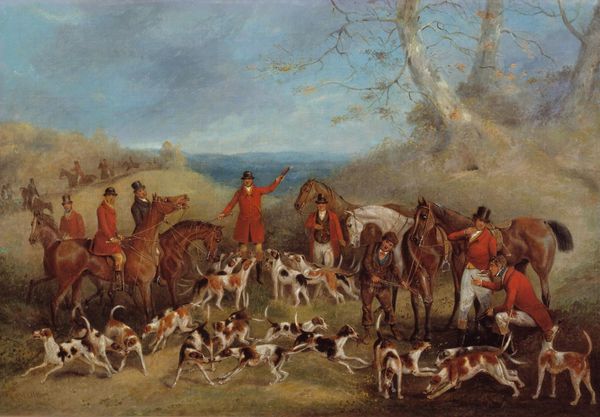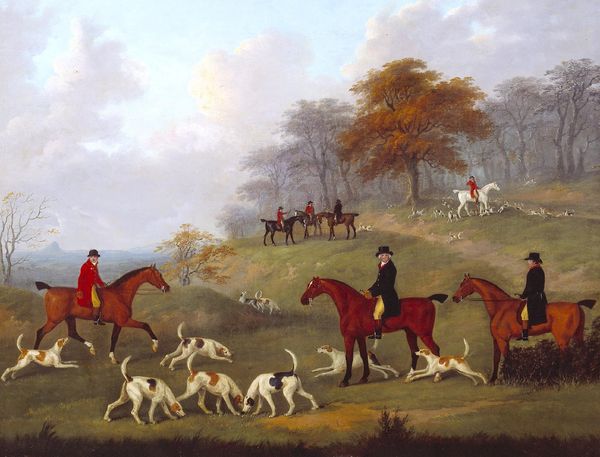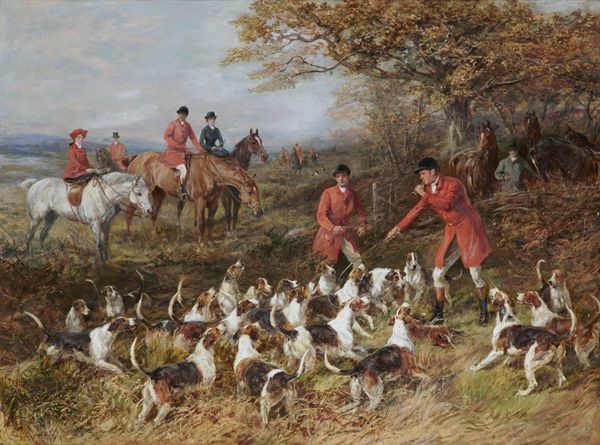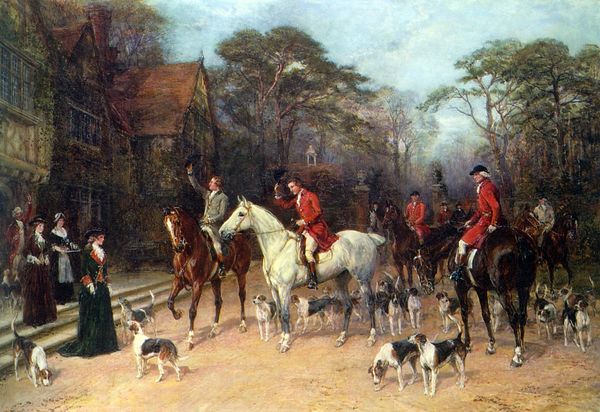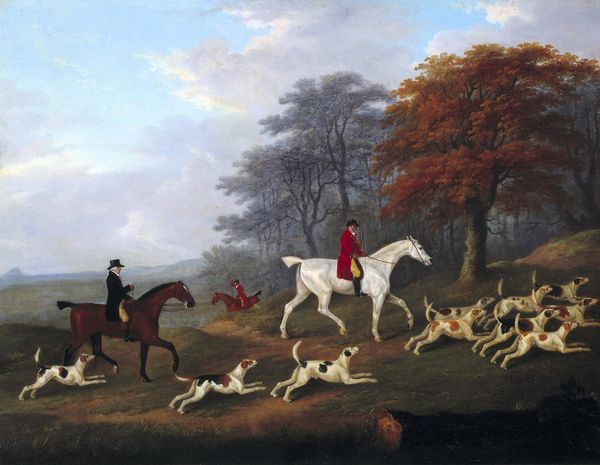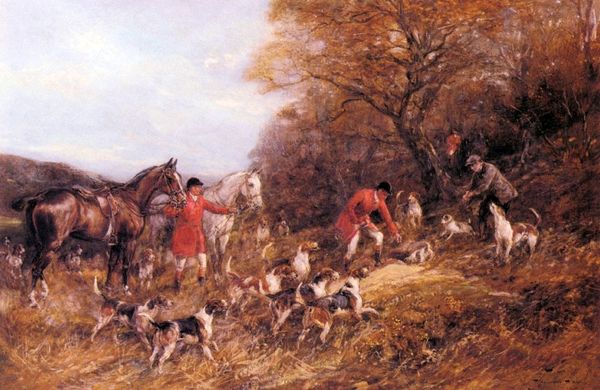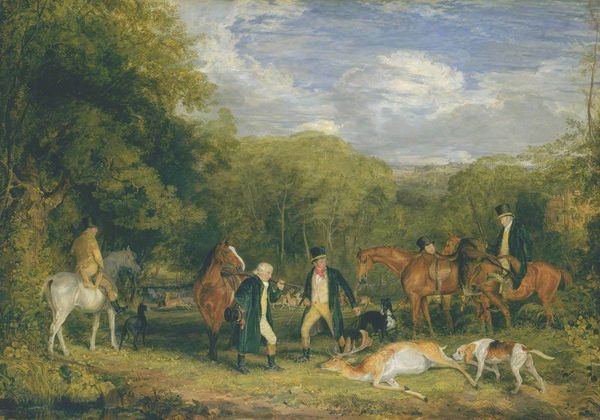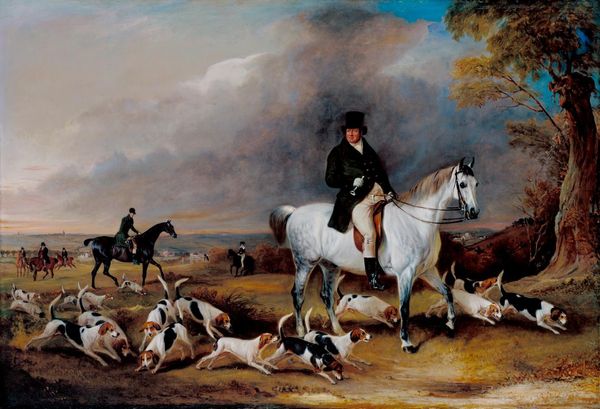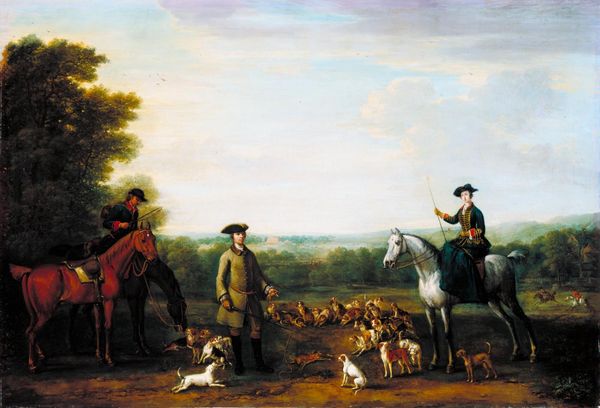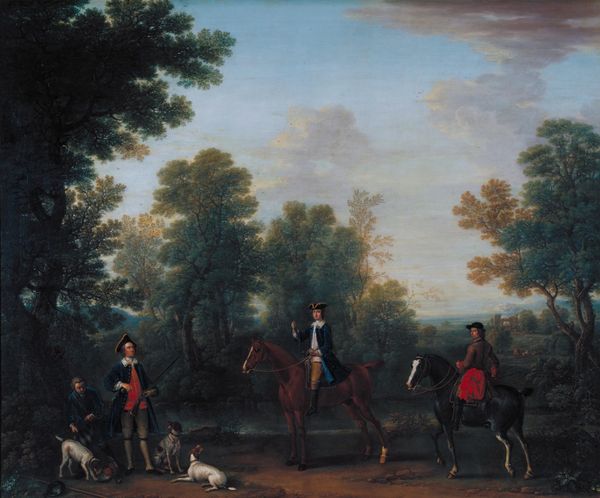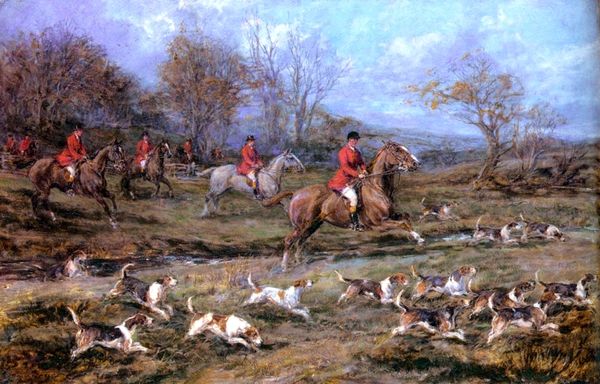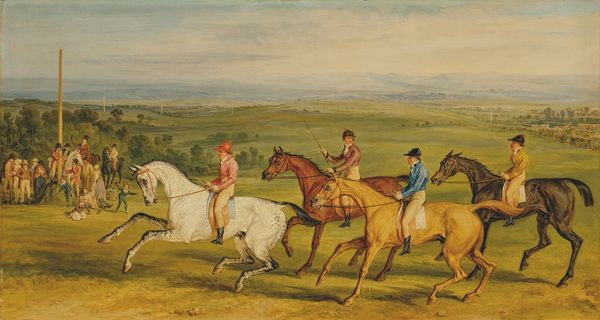
painting, oil-paint
#
animal
#
painting
#
oil-paint
#
landscape
#
figuration
#
oil painting
#
horse
#
genre-painting
#
academic-art
#
realism
Copyright: Public domain
Curator: My eye is immediately drawn to the red coats amidst a sea of browns and greens. There's something simultaneously chaotic and meticulously arranged about this scene. Editor: That’s a very astute observation. We are looking at "Meet of the Quorn Hounds at Kirby Gate," an oil on canvas painted in 1910 by Heywood Hardy. Hardy was known for his sporting and animal paintings, often capturing scenes of British country life. This particular work freezes a moment from a fox hunt. Curator: Hunting! Of course, those red coats— historically signifiers of power and privilege now repurposed as symbols of tradition, much like the hunt itself. This piece encapsulates more than just sport; it hints at societal structures and the weight of the past clinging to present-day rituals. The horses, for instance, possess such refined grace that mirrors their owners. Editor: Exactly. The composition reinforces this. Note how Hardy positions the figures – the riders in the foreground command immediate attention, projecting an image of stability. It tells a complex story of the social elite engaged in an activity deeply ingrained in British history, despite shifts in moral and ethical considerations around the hunt. It’s a statement of class and land ownership, really. Curator: The symbolism goes further, I think. Even the weather plays a role, hinting at the relentless nature of tradition, a looming sky pregnant with both anticipation and foreboding. One can feel both exhilaration and concern radiating from the painting, evoking cultural memory embedded within the painting's atmosphere. It is unsettling and gorgeous. Editor: I agree entirely. Its impact remains potent. In "Meet of the Quorn Hounds," Hardy captures more than just a scene. He immortalizes an ideology through visual iconography. It's a historical artifact, reminding us of the public roles art assumed and continues to perpetuate today. Curator: Absolutely, understanding pieces such as these aids our comprehension not only of visual language but the social and cultural layers that accumulate upon images, their impact resonating long after the event depicted. Editor: Well said! Considering the socio-political currents reflected here, this Hardy work encourages ongoing and critical evaluations regarding art’s purpose and place within culture.
Comments
No comments
Be the first to comment and join the conversation on the ultimate creative platform.
